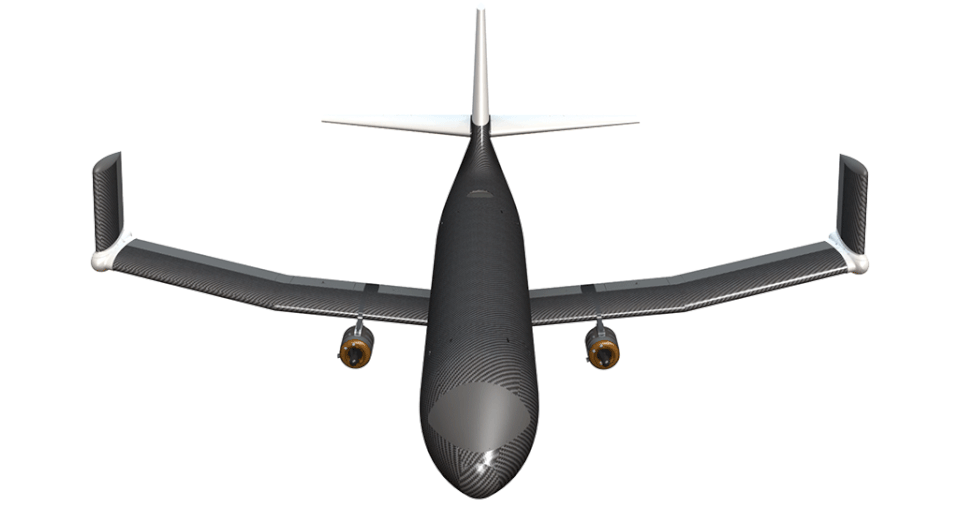NASA Will Test Aircraft Wings That Fold Mid-Flight

NASA recently launched a new program with Boeing and aeronautics company Area-I to test wings equipped with actuators that would allow them to fold during flight. The folding wings project, called Spanwise Adaptive Wing (SAW), could provide the ability to modify wings for maximum efficiency depending on flight conditions.
An example would be keeping the wings fully extended for maximum lift during takeoff, and then folding the tips down once cruising velocity has been achieved to trade some of that lift for yaw control (the stability of the aircraft around a vertical axis).
"Ideally, we would be able to take that portion of the wing and articulate it up or down to the optimal flight condition that you're in," Matt Moholt, NASA Armstrong principal investigator for SAW, said in a press release. "So let's say you're a condition that requires a climb-out. The optimal position might be up 15 degrees or down 15 degrees, and you would be able to get that."

Currently, folding wings are primarily used for storing aircraft where space is limited, such as on aircraft carriers. While the XB-70 Valkyrie was used to study this type of wing articulation in the 1960s, NASA engineers believe that improved actuator technology will allow them to push the technology further. Ideally, they'll be able to precisely refine wing shape while in flight without burdening the airfoil with extra weight or compromised structural integrity.
[contentlinks align="left" textonly="false" numbered="false" headline="NASA%20Experimential%20Flight%20Research" customtitles="NASA's%20Newest%20X-Plane%20Will%20Have%2014%20Electric%20Motors%7CNASA%20to%20Build%20a%20Supersonic%20Plane%20Without%20the%20Boom%7CFirst%20Look:%20NASA's%20New%20Bleeding-Edge%20X-Plane" customimages="||" content="article.21408|article.21312|article.19521"]
"Some wings are so long that to clear infrastructure it has to fold on the ground. If we're going to be articulating wings, let's explore the use of an advanced actuator that could enable it to articulate in flight as well, then you can really put the wing in an ideal setting," said Moholt. "Further, why just take the ground benefit of it? Let's see if there's a flight benefit of it as well."
The SAW system's solid-state actuators could be powered by an all-electric system. NASA is investing heavily in low-carbon propulsion technologies as part of the agency's Aeronautics Research Mission Directorate. They are even developing an all-electric X-plane.
SAW technology can be implemented at all stages of flight, from taxing to takeoff to landing to cruise, and even at supersonic speeds. Wing articulation might actually produce the most benefits when traveling faster than the speed of sound.
"In supersonic flight, yaw stability becomes a big issue," said Moholt. "If you're flying supersonically, you have tons of lift. Let's say you need more yaw control. Well, if I fold the wing portion all the way down, I may be able to trade lift in favor of more yaw control where I need it and less lift where I don't need it."
NASA is considering testing SAW technology on the Area-I Prototype-Technology Evaluation and Research Aircraft (PTERA)-an ideal sub-scale aircraft for initial tests due to its array of sensors and research instruments. Early flight testing on the PTERA could happen as soon as Spring 2017, and NASA plans to simultaneously test much larger actuators that could be scaled and implemented on a variety of full-sized aircraft wings.
Source: NASA
You Might Also Like

